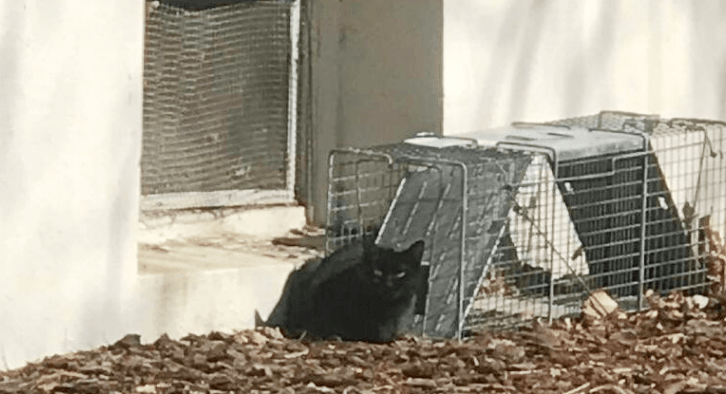Stray cats taken care of by UMW community
3 min read
Spencer Anderson
By RACHEL MANNING
Senior Writer
While walking through campus one evening, a small, dark shadow crosses the path. The figure disappears under a nearby residence hall. When approaching the hall, faint meowing coming from within can be heard.
If you’re like many people on this campus- and around the nation- this situation is very familiar, as stray cats are becoming quite a common sight. According to humanesociety.com, there are as many as 40 million stray cats in the United States, and that number is growing, as most of these cats are not spayed or neutered.
UMW is not excluded from this phenomenon, as there are also stray cats living on the UMW campus. Most often seen around Monroe, Willard, and Virginia halls, the cats are said to be living underneath Monroe and Willard. Some students and faculty are taking efforts to capture or take care of these animals, and have placed food or trapping devices near these buildings.
“I think people taking care of stray cats is good, but the problem of stray cats in the first place must be handled,” says sophomore computer science major Joseph Haythorn, who has seen these campus cats before.
While seeing an occasional cat on campus may not seem to be a big deal, stray cats are harmful to the local ecosystem, as they are the one of the biggest killers of birds, small mammals, and other local wildlife- according to smithsonianmag.com. However, this problem cannot be attributed solely to strays, as pet cats who are let out during the day also contribute to these issues.
“It’s sad that the cats are doing this,” says junior Spanish major Marlen Reyes Silva “but killing birds is just their way of surviving.” Haythorn has a similar opinion: “It depends on whether the birds are endangered or not. Also, to put things in perspective, a dead bird means more food and territory for all the other birds.”
That being said, while student cat lovers may be thrilled at the prospect of finding a cat to love while they’re living away from their own cat, one should never approach an unfamiliar animal. Most of these cats are stray, and it is likely that they are not friendly, so it’s best to leave them alone unless you have significant experience with catching and taming feral cats. Furthermore, some of the regular campus cats may not be strays at all, but instead pet cats visiting from the nearby neighborhood.
Whether or not they’ve actually seen the stray cats, students appear to have no issue with their presence on campus. “I haven’t seen any cats myself, but long as they’re not hurting anyone we should let them be,” says junior Spanish major Kirsten Merrimarahajara. This appears to be the general sentiment of students: that the cats are, like the squirrels and the birds, just a part of the campus “wildlife,” and should be left to live their own way. Until they do cause a disruption, there appears to be no cause for their removal, since the cats, like many students, have made themselves at home on UMW’s campus and intend to stick around- at least for a little while.


